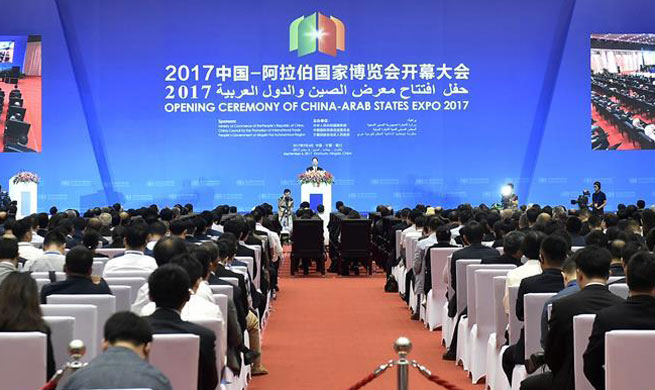by Levi J Parsons
SYDNEY, Sept. 7 (Xinhua) -- A team of quantum engineers in Australia have published a major breakthrough in the world of quantum computing.
Scientists at the University of New South Wales' high-tech facility, the ARC Centre of Excellence for Quantum Computation and Communication Technology, have been at the cutting edge of fabricating silicon quantum computing chips from the ground up.
They were the first in the world to demonstrate the operation of a quantum bit made out of a single atom of phosphorus in silicon.
But these quantum bits or qubits were either made up of a single electron or a single nucleus.
"What we have discovered is that if we combined the electron and the nucleus together, we can make a new quantum bit that can be operated by electric fields and those flip-flop qubits can be coupled to each other at a very long distance, 200 nanometers!" team leader professor Andrea Morella told Xinhua.
"Of course it's still a very short distance, but it's much longer than what we thought would be necessary in the past."
"So instead of atoms being side by side, we can now space them out on the chip, so that there is enough space to place classical electronics and the interconnecting wires between the qubits."
Described by Morella as a Eureka moment, the idea came when researchers were trying to couple single atom spins to superconducting circuits.
"We realized that if we combined the electron and the nucleus together and we pulled the electron away from the nucleus, we create and electric field," Morella explained.
"That allows us to couple two of these atoms at a much longer distance than would be possible by magnetic coupling."
In order to do this, the scientists use a nano fabrication lab and operate several machines that are able to modify the electrical properties of the silicon and deposit very small metallic electrodes on top of them.
"Once the chip is made, it needs to be cooled down to extremely low temperatures for it to start behaving quantum mechanically and then it gets connected to some very fast electronics on the outside, that controls the quantum state of the individual atom and does quantum operations with it," Morella said.
Although the breakthrough is a huge step on the way to developing and integrating quantum computers for wide scale use, there is still a long way to go before researchers can mass-produce the technology.
"Our goal is to make a prototype silicon quantum computer that has 10 qubits within the next five years," Morella said.
"So for this to become really practical and to make an impact in the world, we expect it to take another five to 10 years on top of that."
But according to Morella, the upgrade to modern computers is much needed because there are certain problems that just can't be solved even by big classical supercomputers.
"Typical examples are the simulation of molecules and materials, they are themselves quantum objects and so the complexity of understanding molecules and materials grows exponentially with size," Morella said.
"So that's where you hit a brick wall."
"A quantum computer is naturally born to solve those kinds of problems."
















